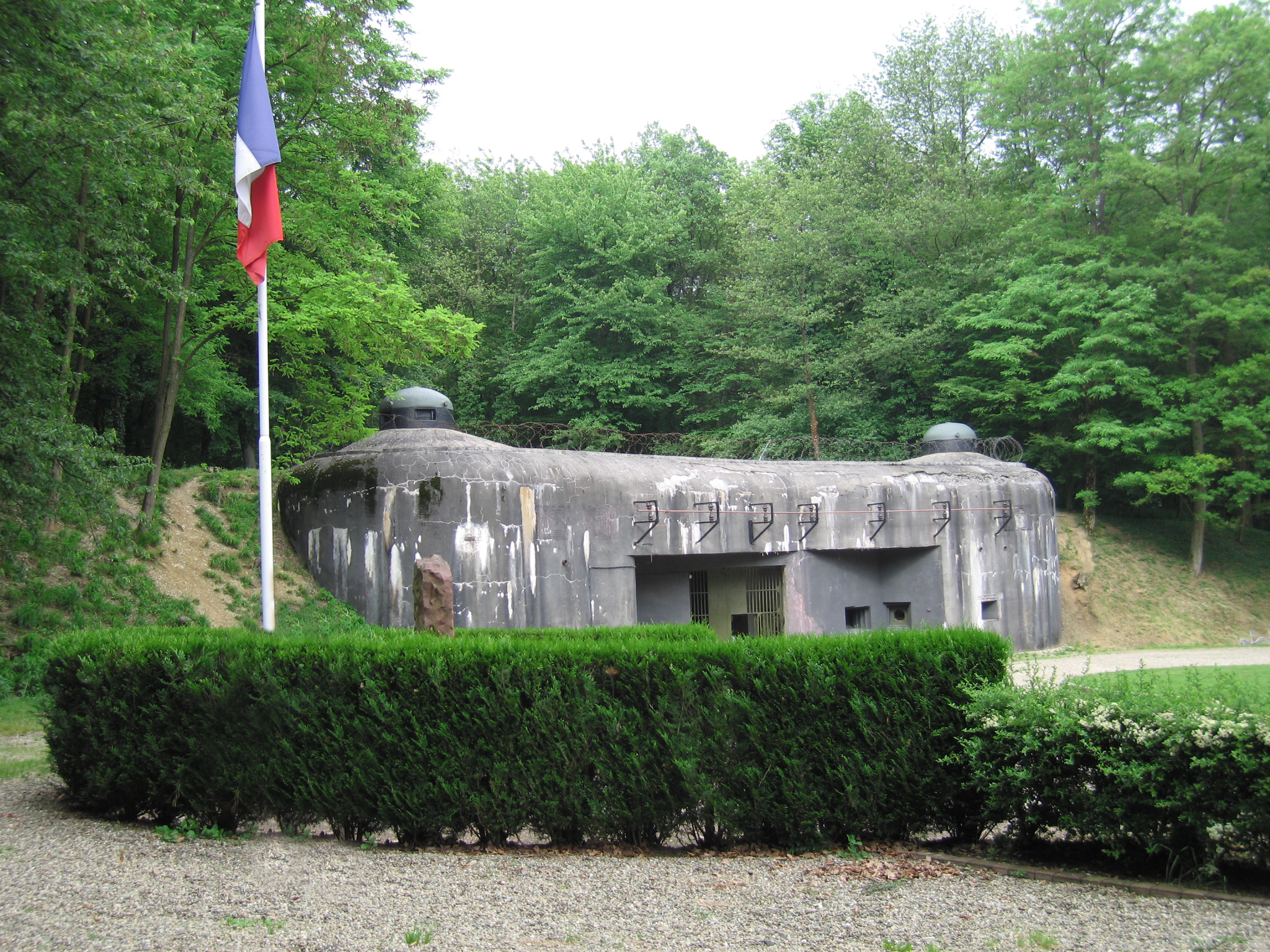
Maginot Line
The Maginot Line (French: Ligne Maginot, IPA: [liɲ maʒino]), named after the French Minister of War André Maginot, is a line of concrete fortifications, obstacles and weapon installations built by France in the 1930s to deter invasion by Nazi Germany and force them to move around the fortifications. It was impervious to most forms of attack; consequently, the Germans invaded through the Low Countries in 1940, passing it to the north. The line, which was supposed to be fully extended further towards the west to avoid such an occurrence, was finally scaled back in response to demands from Belgium. Indeed, Belgium feared it would be sacrificed in the event of another German invasion. The line has since become a metaphor for expensive efforts that offer a false sense of security.[1]
Maginot Line
Defensive line
Only some sites
Mostly intact, through the preservation of the French Government
1929–1938
Paul Painlevé, Colonel Tricaud
- Named after André Maginot (French Minister of War, late 1920s – early 1930s)
1935–1969
Concrete, steel, iron
- Battle of France (1940)
- Operation Nordwind (1945)
Constructed on the French side of its borders with Italy, Switzerland, Germany, Luxembourg and Belgium, the line did not extend to the English Channel. French strategy, therefore, envisioned a move into Belgium to counter a German assault. Based on France's experience with trench warfare during World War I, the massive Maginot Line was built in the run-up to World War II, after the Locarno Conference in 1925 gave rise to a fanciful and optimistic "Locarno spirit". French military experts believed the line would deter German aggression because it would slow an invasion force long enough for French forces to mobilise and counterattack.
The Maginot Line was invulnerable to aerial bombings and tank fire; it featured underground railways as a backup. It also had state-of-the-art living conditions for garrisoned troops, supplying air conditioning and eating areas for their comfort.[2] French and British officers had anticipated the geographical limits of the Maginot Line; when Germany invaded the Netherlands and Belgium, they carried out plans to form an aggressive front that cut across Belgium and connected to the Maginot Line.
The French line was weak near the Ardennes. General Maurice Gamelin, when drafting the Dyle Plan, believed this region, with its rough terrain, would be an unlikely invasion route of German forces; if it were traversed, it would be done at a slow rate that would allow the French time to bring up reserves and counterattacks. The German Army, having reformulated their plans from a repeat of the First World War-era plan, became aware of and exploited this weak point in the French defensive front. A rapid advance through the forest and across the River Meuse encircled much of the Allied forces, resulting in a sizeable force having to be evacuated at Dunkirk and leaving the troops to the south unable to mount an effective resistance to the German invasion of France.[3]
The Maginot Line was built to fulfill several purposes:
Manning[edit]
Maginot Line fortifications were manned by specialist units of fortress infantry, artillery and engineers. The infantry manned the lighter weapons of the fortresses and formed units with the mission of operating outside if necessary. Artillery troops operated the heavy guns, and the engineers were responsible for maintaining and operating other specialist equipment, including all communications systems. All these troops wore distinctive uniform insignia and considered themselves among the elite of the French Army. During peacetime, fortresses were only partly manned by full-time troops. They would be supplemented by reservists who lived in the local area and who could be quickly mobilised in an emergency.[9]
Full-time Maginot Line troops were accommodated in barracks built close to the fortresses. They were also accommodated in complexes of wooden housing adjacent to each fortress, which were more comfortable than living inside, but were not expected to survive wartime bombardment.[10] The training was carried out at a fortress near the town of Bitche in Moselle in Lorraine, built in a military training area and so capable of live fire exercises. This was impossible elsewhere as the other parts of the line were located in civilian areas.[10]
Cultural impact[edit]
The term "Maginot Line" has become a part of the English language: "America's Maginot Line" was the title used for an Atlantic Magazine article about America's military bases in Asia.[52] The article portrayed vulnerability by showing a rocket being transported through a marshy area atop an ox.[53] New York Times headlined "Maginot Line in the Sky" in 2000[54] and "A New Maginot Line" in 2001.[55] It was also frequently referenced in wartime films, notably Thunder Rock, The Major and the Minor (albeit as a comedic metaphor) and Passage to Marseille.
Somewhat like "line in the sand" it is also used in non-military situations, as in "Reagan's budgetary Maginot Line."[56]